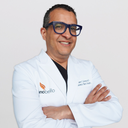Posted underEyelid Surgery q&a
Lower Eyelid Surgery One Year Ago and I Have These Suture Marks (train Tracks) Scars Under my Eye? (photo)
Is there any procedure or cream I can use to get rid of these. I was thinking a chemical peel, but was told that is only very superficial, I was also told laser, but I'm afraid it would retract my eyes even more from the tightening. I also have ectropion and retraction too. What would help these scars and what should I stay away from? Also what caused this to happen? Thank You.
Answers (9)
From board-certified doctors and trusted medical professionals
Dr. Brent Moelleken, MD

Dr. Brent Moelleken, MD
Beverly Hills Plastic Surgeon
Answer
Dr. Robert F. Centeno, MD, FACS

Dr. Robert F. Centeno, MD, FACS
Board Certified Plastic Surgeon
Answer
Dr. Stephen Prendiville, MD

Dr. Stephen Prendiville, MD
Board Certified Facial Plastic Surgeon
Answer
Dr. Luis Villar, MD, FACS

Dr. Luis Villar, MD, FACS
Board Certified Plastic Surgeon
Answer
Dr. Jeffrey Zwiren, MD
Dr. Jeffrey Zwiren, MD
Board Certified Plastic Surgeon
Answer
Dr. Robert L. Kraft, MD, FACS

Dr. Robert L. Kraft, MD, FACS
Board Certified Plastic Surgeon
Answer
Dr. Peter E. Johnson, MD
Dr. Peter E. Johnson, MD
Board Certified Plastic Surgeon
Answer
Dr. Amiya Prasad, MD - Account Suspended
Dr. Amiya Prasad, MD - Account Suspended
Oculoplastic Surgeon, Board Certified in Ophthalmology
Answer
Dr. Devinder S. Mangat, MD, FACS (retired)
Dr. Devinder S. Mangat, MD, FACS (retired)
Board Certified Facial Plastic Surgeon
Answer
More Eyelid Surgery Questions
See all Eyelid Surgery Q&AWE SEND PRETTY
EMAILS
What’s trending? Who’s turning heads? Which TikTok myths need busting? We’ve got you. No fluff, no gatekeeping—just real talk. Get our free, unfiltered newsletter.